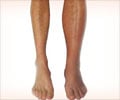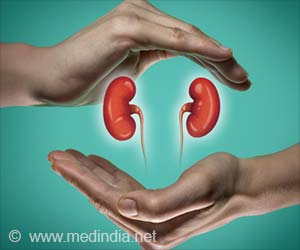Thrombosis disrupts blood flow in the circulatory system, a new smart patch containing hyaluronic acid and heparin was found to prevent thrombosis.

- Thrombosis occurs due to the formation of a blood clot that disrupts blood flow in the circulatory system.
- Researchers find smart patch containing hyaluronic acid and heparin to prevent thrombosis.
- Smart patch found to be more effective than heparin shots.
Thrombosis occurs due to the formation of blood clot that disrupts the blood flow in the circulatory system which can lead to serious health problems resulting in a heart attack or stroke.
Blood-thinning medications such as heparin are used to reduce the formation of blood clots in the arteries. These drugs should be given in the required amount as a high dose can result in hemorrhaging and low dose can prevent the recurrence of thrombosis.
Zhen Gu, associate professor in the joint biomedical engineering program at North Carolina State University and University of North Carolina-Chapel Hill says, "Our goal was to generate a patch that can monitor a patient's blood and release additional drugs when necessary; effectively, a self-regulating system."
Caterina Gallippi, co-author and associate professor in the joint biomedical program, said, "Two years ago, I spoke with Zhen Gu about the significant clinical need for precise delivery of blood thinners."
"We, together with Professor Yong Zhu in the mechanical engineering department at NC State, assembled a research team and invented this patch."
When the increased level of thrombin enzyme comes in contact with the microneedles of the smart patch, heparin is released into the bloodstream.
"So we created a disposable patch in which the more thrombin there is in the blood stream, the more Heparin is released."
Jicheng Yu, another student in Gu’s lab, said, "We will further enhance the loading amount of drug in the patch. The amount of Heparin in a patch can be tailored to a patient's specific needs and replaced daily, or less often, as needed."
"But the amount of Heparin being released into the patient at any given moment will be determined by the thrombin levels in the patient's blood."
The research study was conducted by testing the Hyaluronic acid - Heparin smart patch in a mouse model. Large doses of thrombin were injected, this when untreated would result in a life-threatening blood clot condition in the lungs.
Two experiments were carried out, in the first one the mice were left untreated, few were subjected to heparin shots and hyaluronic-heparin smart patch. The study results found untreated mice died when compared to the heparin shots and smart patch treated mice.
In the second experiment, thrombin was injected after 6 hours of treatment, all the mice which received hyaluronic acid - heparin smart patch after 15 minutes were found to be fine, while the 80% of the mice which received heparin injection died.
The author concludes that the smart patch will help to treat patients by cutting down the treatment costs. "This paper represents a good first step, and we're now looking for funding to perform additional preclinical testing," he added.
Source-Medindia










